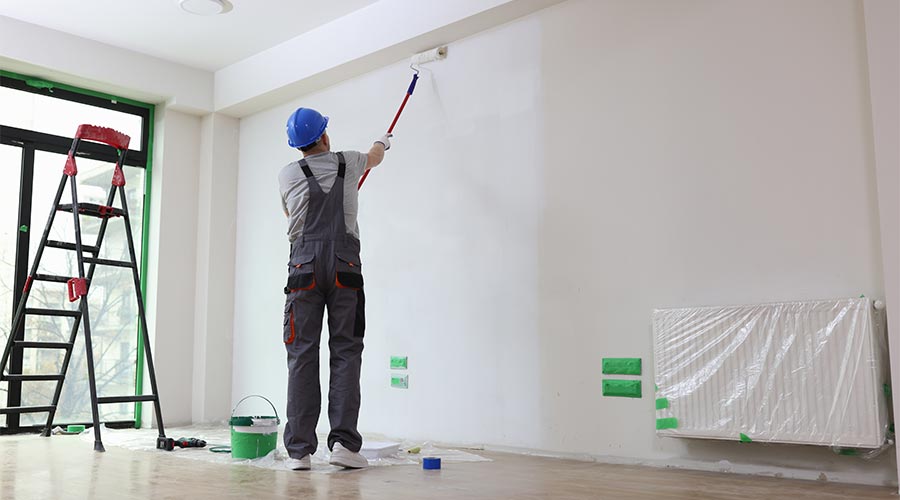Specifying Sustainable Paints Means Determining Life-Cycle Costs
Sustainability has become a higher priority for maintenance managers specifying paints and coatings, with a great deal of attention going to the volatile organic compounds (VOC) these products contain. Just as important to managers are the more practical considerations related to paints and coatings.
By determining the life-cycle costs of these materials and understanding the impact of paint quality and performance on the purchasing decision, managers will be better prepared to balance sustainability, cost and performance.
Determining Life-Cycle Costs
Limited budgets often lead managers to place a relatively high priority on material costs and coverage when selecting paints and coatings. But when managers look more closely, they find that costs vary widely, and the lowest first cost does not necessarily add up to long-term savings or a long-term solution. Managers can determine a paint's life-cycle cost by adding the costs for materials, preparation labor, application labor, cleanup, and disposal.
Material consists of paint, brushes, rollers, sprayers, tarps, ladders, masking tape, gloves, and safety glasses.
But selecting a long-lasting paint can cut costs for all of these components because paint crews will have to use them less often.
Paint is the largest material cost, and pigment — the solid component that imparts color and gloss — is the costliest component of paint. To reduce ozone depletion, the U.S. Environmental Protection Agency (EPA) closely regulates solvents that contain VOCs. These compounds also are high-odor components.
Paints that are more environmentally responsible and contain few or no VOCs can cost 50 percent more than paints with higher levels of VOCs. But this difference, due to the higher pigment percentage and cost of research and development to meet EPA guidelines, is coming down.
The automotive industry offers managers an example of the impact life-cycle-cost analysis can have on sustainability. Because of the increased attention paid to life-cycle issues — including formulation, preparation, and application — many cars on the road have maintained a like-new appearance 10 or more years after purchase. This has occurred despite the effects of sun, snow, rain, dust, dirt, and ice, as well as impacts from stones and gravel.
Some practices that have produced success in the automotive industry apply to facility maintenance. For example, any surface in a facility can have difficult-to-see dirt, dust, corrosion, and chemical impurities on it. Workers must remove this film before painting to get the best binding results. A great deal of the cracking, chipping and flaking seen on painted surfaces results from failing to remove such substances. In an automotive setting, workers wash and rinse cars many times before applying the paint to ensure long-lasting results.
The lesson for workers in facilities is that thorough preparation for painting must includes cleaning, rinsing several times, drying, filling dents and cracks, and sanding. Careful attention to detail during preparation phase pays off in longer performance life and a lower life-cycle cost.
Application labor is the work done to apply a paint or coating and often is only a small fraction of preparation labor, if workers do the job right. Painters can reduce application time by using auto-feed rollers and spraying-application techniques.
Cleanup is the process of removing masking tape and drop cloths, as well as washing and storing painting equipment. Workers can use brush cleaners, which dissolve paint more quickly and require only a plain-water rinse.
But cleanup also includes properly disposing of unused paint, which workers can recycle or mix with a paint hardener for more sustainable disposal. One cup of hardener thickens about 30 percent of a gallon in 10 minutes. Workers can place this batter on a newspaper to fully harden overnight, then dispose of it with other trash.
Related Topics:












